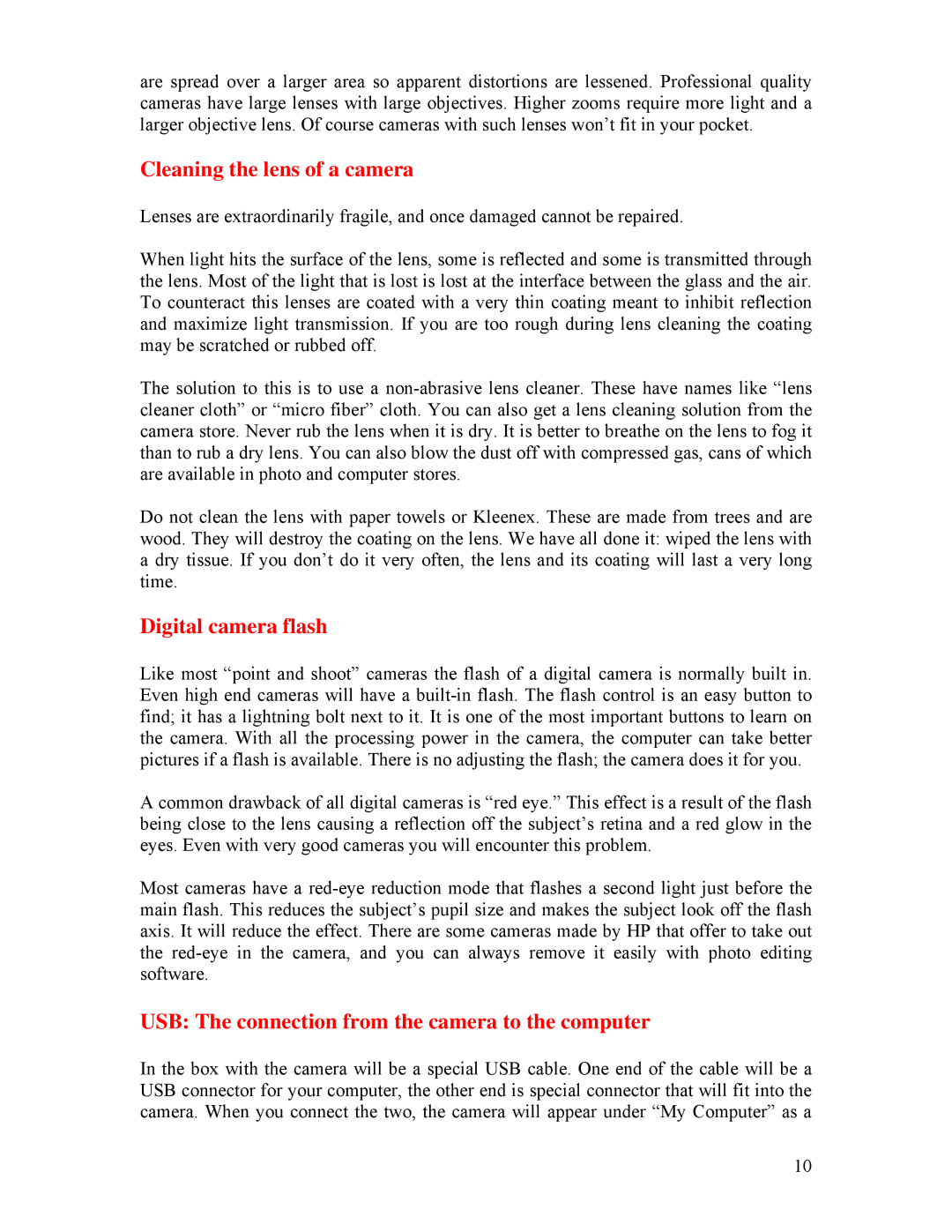are spread over a larger area so apparent distortions are lessened. Professional quality cameras have large lenses with large objectives. Higher zooms require more light and a larger objective lens. Of course cameras with such lenses won’t fit in your pocket.
Cleaning the lens of a camera
Lenses are extraordinarily fragile, and once damaged cannot be repaired.
When light hits the surface of the lens, some is reflected and some is transmitted through the lens. Most of the light that is lost is lost at the interface between the glass and the air. To counteract this lenses are coated with a very thin coating meant to inhibit reflection and maximize light transmission. If you are too rough during lens cleaning the coating may be scratched or rubbed off.
The solution to this is to use a
Do not clean the lens with paper towels or Kleenex. These are made from trees and are wood. They will destroy the coating on the lens. We have all done it: wiped the lens with a dry tissue. If you don’t do it very often, the lens and its coating will last a very long time.
Digital camera flash
Like most “point and shoot” cameras the flash of a digital camera is normally built in. Even high end cameras will have a
A common drawback of all digital cameras is “red eye.” This effect is a result of the flash being close to the lens causing a reflection off the subject’s retina and a red glow in the eyes. Even with very good cameras you will encounter this problem.
Most cameras have a
USB: The connection from the camera to the computer
In the box with the camera will be a special USB cable. One end of the cable will be a USB connector for your computer, the other end is special connector that will fit into the camera. When you connect the two, the camera will appear under “My Computer” as a
10
